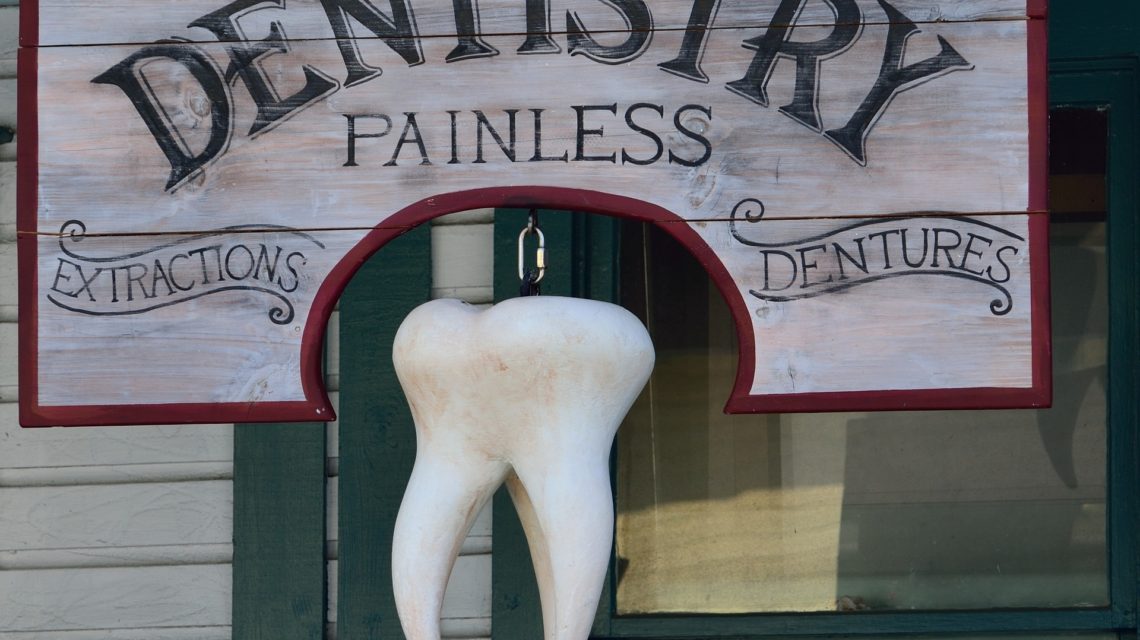Getting a tooth permanently pulled is not an ideal situation, but sometimes it can’t be avoided. The first tooth extraction many people experience is having their wisdom teeth taken out. Other reasons for an adult tooth extraction can include a crowded mouth, decay, infection, periodontal disease or a complicated fracture. At Country Club Dental Flagstaff, whenever possible, we’ll always discuss alternatives to extracting a tooth.
But when an extraction is necessary, we know that this type of procedure can be anxiety producing for many patients. That’s why we’d like to share in detail what to expect with a tooth extraction: before, during, and after.
Preparing for a Tooth Extraction
In preparation for a tooth extraction, we will obtain your full medical and dental history, as well as a list of all medications and supplements taken. An x-ray will be taken to assess the best way to remove the affected tooth. There are two types of tooth extractions: simple and surgical. You can read more about the procedures below.
On occasion, patients will have a condition that puts them at higher risk for developing a severe infection post-surgery. If this is the case, we will sometimes prescribe antibiotics before and after the extraction.
Most patients will not have food or beverage restrictions before this type of procedure.
Our highest priority at Country Club Dental is that you feel heard, and that as much as possible, you feel at ease before and during the day of your procedure. We encourage every patient to ask questions and let us know about any concerns that have not been addressed.
During the Procedure
A simple tooth extraction is a fairly quick and routine process that can be completed in 20-40 minutes for one tooth. If you are having more than one tooth pulled, expect 5-15 minutes for each additional tooth.
Before a tooth is pulled, a dentist or oral surgeon will apply a local anesthesia injection to fully numb the necessary area. In some cases, topical anesthesia will be applied to the injection site beforehand to dull any sense of the injection.
During the extraction process, though the site will be completely numbed, you will probably feel some pressure. This is from the process of gently rocking the tooth in order to widen the socket for removal. You should not experience any pain, as the anesthetic has numbed the nerves and stopped the transference of pain. But the nerves that transmit pressure sensations are not profoundly affected by the numbing. If you do feel pain at any time during the extraction, please let us know right away.
A surgical tooth extraction is slightly more complex. It is most commonly required for teeth that have not fully broken through the gumline, or that are broken off at the gumline. In this situation, the dentist will need to make a small incision in order to access the tooth. From there, the procedure is similar to a simple tooth extraction.
For both simple or surgical tooth extractions, the dentist may stitch the extraction site if it’s necessary.
Tooth Extraction Aftercare
After a tooth extraction, it’s important for a blood clot to form to stop the bleeding and begin the healing process. We’ll have you bite on a gauze pad for 30-45 minutes immediately after the appointment. If the bleeding persists, place another gauze pad and bite firmly for another 30 minutes. You may have to do this several times until it stops.
After the blood clot forms, it is important not to disturb or dislodge the clot. Do not rinse vigorously, suck on straws, smoke, drink alcohol, or brush teeth next to the extraction site for 72 hours. These activities may dislodge or dissolve the clot and hinder the healing process. Limit vigorous exercise for the next 24 hours, as this increases blood pressure and may cause more bleeding from the extraction site.
You may feel some pain and experience some swelling after a tooth extraction. An ice pack or an unopened bag of frozen peas or corn applied to the jaw area at the extraction site will keep swelling to a minimum. Take pain medications as prescribed. The swelling usually subsides after 48 hours. If antibiotics are prescribed, continue to take them for the indicated length of time, even if signs and symptoms of infection are gone. Call our office if the medication doesn’t seem to be working.
Drink lots of fluids and eat nutritious, soft food, on the day of the extraction. You can begin to eat normally as soon as you are comfortable. It is important to resume your normal dental routine after 24 hours, taking care not to brush near the extraction site, as mentioned previously. Your regular routine should include brushing 2-3 times a day and flossing your teeth at least once a day. This will speed healing and help keep your mouth fresh and clean.
After a few days you should feel fine and can resume your normal activities. If you have heavy bleeding, severe pain, continued swelling for 2-3 days, or a reaction to the medication, call Country Club Dental immediately for assistance.
Images used under creative commons license – commercial use. Image by Paul Brennan from Pixabay (7/15/2019)

